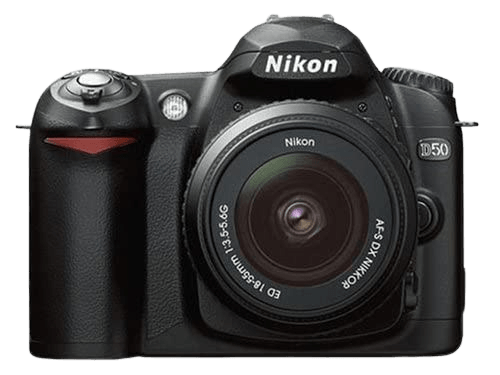Nikon D50 Specs and Scores

The Nikon D50 scores 28/100 in our evaluation. Launched on April 20, 2005, this DSLR camera entered the market with a price tag of $1000. Measuring 133 x 102 x 76mm and weighing 620g, or 1.37lbs, it is a reasonably compact and lightweight option.
However, considering today’s market, the Nikon D50 falls short in terms of modern specifications. Given its age and score, there are more advanced options available to consumers. While it was a solid choice in 2005, it may not be the best option for current photography needs.
Nikon D50 Overview and Optics
The Nikon D50 optics score is 34/100. With 6 megapixels, a shooting speed of 2.5, and a CCD sensor, the camera has basic specifications. The Nikon Image processing engine powers the camera, and its DXOMARK sensor score is 55. The APS-C sensor size and Nikon F DX lens mount are standard features for this camera.
Comparing these specifications to current market standards, the Nikon D50 falls behind. Modern cameras offer higher megapixels, faster shooting speeds, and advanced sensor types. Additionally, the lack of image stabilization and a 3:2 aspect ratio limit the D50’s potential in various shooting scenarios.
Considering the optics, the Nikon D50 is an entry-level camera that may not meet the demands of today’s photography enthusiasts. Its scores and specifications reflect its limitations in comparison to the advanced options available in the market.
Nikon D50 Video Performance
The Nikon D50 lacks video capabilities. This camera only captures still images, not videos.
Nikon D50 Features and Benefits
The Nikon D50 feature score stands at a mere 10/100. The camera possesses a 2-inch screen with a resolution of 130,000 dots, which is significantly lower than current market standards. Furthermore, the Nikon D50 lacks modern enhancements such as a touchscreen, flip screen, GPS, and Bluetooth capabilities.
However, it does include WIFI connectivity, allowing users to transfer photos without the need for cables. Despite this advantage, the Nikon D50’s features fall short when compared to contemporary cameras.
The Nikon D50’s limited features make it less appealing to today’s photographers, who expect more advanced technology and convenience. As a result, potential buyers should consider other options with better features to meet their photography needs.
Nikon D50 Storage and Battery
The Nikon D50 scores 51/100 in the storage and battery category. It has a single memory card slot that accepts SD cards, providing adequate but limited storage options. The battery life, with 2000 shots per charge, is quite impressive for a camera of its age. The D50 uses an EN-EL3 battery type, which is reliable and durable. However, it lacks USB charging capabilities, making it less convenient for on-the-go charging.
Given the advancements in today’s camera market, the Nikon D50’s storage and battery specifications are modest. While the battery life is a strong point, the absence of USB charging and limited memory card options may deter modern photographers. The D50 remains a solid choice for casual users, but those seeking cutting-edge features may want to explore newer models.
